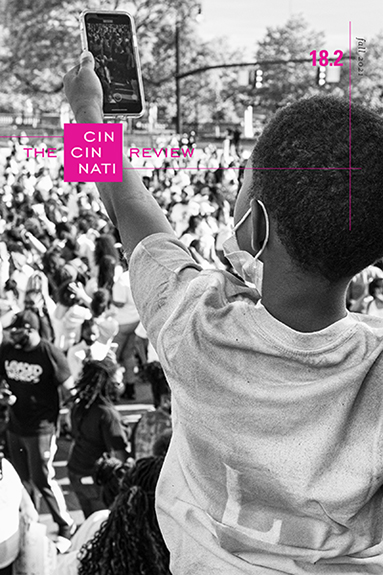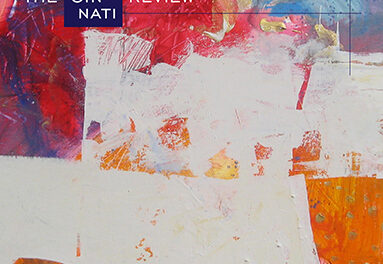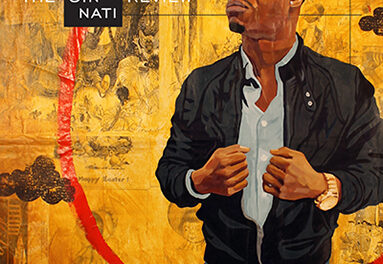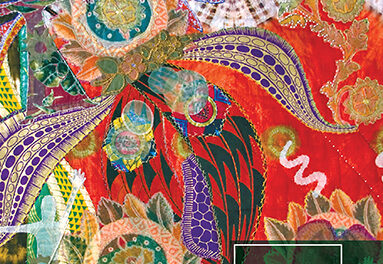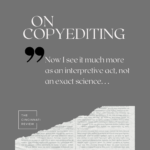We are pleased to share this review by Sakinah Hofler of Toni Cade Bambara’s Gorilla, My Love (Vintage, 1992), which appeared in Issue 18.2 as part of a special multigenre review feature on joy, hope, and delight (read the entire feature here):
There’s a spectacular category of writers I like to call badasses. These writers aren’t just writers: they’re juggling two to three other careers, they’re activists, and they’re so busy, one wonders, How do they find time to write?
Yet they do.
Toni Cade Bambara was one such badass. Not only did she publish works of fiction and nonfiction, she majored in theater, studied mime in France (yes, mime), worked as a social investigator, served as a program director for a settlement house in Brooklyn, became a professor, and contributed to documentary films. What makes Bambara even more badass is the way she writes. Growing up, I was exposed to a number of African American writers, many of whom only need last-name identifiers: Morrison, Baldwin, Wright, Hurston, Ellison, Walker, Angelou, Haley. While I love and appreciate their depictions of different slices of Black life, I yearned to see a reflection of my Black life in America—an urban youth surrounded by fierce Black folk from all stations in life, with the white gaze as menacing and present but more background music than mainstage concert. Then one day in grad school, I randomly picked the story “Gorilla, My Love” from an anthology to present to my class, because I liked the title. After I read the first few lines—“That was the year Hunca Bubba changed his name. Not a change up, but a change back, since Jefferson Winston Vale was the name in the first place. Which was news to me cause he’d been my Hunca Bubba my whole lifetime, since I couldn’t manage Uncle to save my life”—I devoured the story. The language was fire. Hazel, the protagonist, reminded me of a younger version of myself. I promptly purchased the full story collection Gorilla, My Love (Bambara’s first book, published in 1972) and devoured that too.
The title story has a simple plot: Hazel, the fierce, sassy character who makes the most appearances in the partially linked collection, has a coming-of-age realization that adults often lie and mislead children. She connects her uncle’s name change as well as his relationship with a new girlfriend (he had previously jokingly promised to marry Hazel) to the time she went to a movie titled Gorilla, My Love and discovered the movie was not a King-Kongish, gorilla-type movie, but a movie about Jesus.
What drives this story is the voice, the precise use of details, and the astute, nuanced Hazel. Bambara’s use of African American Vernacular English (AAVE) feels natural. Geneva Smitherman, one of the original advocates for AAVE as its own language, points out that the “crucial difference in American culture lies in the contrasting modes in which Black and White Americans have shaped . . . language—a written mode for Whites, having come from a European, print-oriented culture; a spoken mode for Blacks, having come from an African, orally-oriented background.” When you read “Gorilla, My Love” or any of the fifteen stories in Bambara’s collection, the orality stands out; the rhythm picks up and slows, picks up and slows. These stories are meant to be spoken. “A Sort of Preface” foreshadows the tone of the collection: “It does no good to write autobiographical fiction cause the minute the book hits the stand here comes your mama screamin how could you and sighin death where is thy sting . . .”
Even in stories where there’s less AAVE and more of a focus on “heightened” language, the narration prioritizes orality. In “Sweet Town,” a precocious teen lays out her woes before deciding whether or not to follow her new beau out of town with money stolen from a friend’s grandmother: “‘Dear Mother’—I wrote one day on her bathroom mirror with a candle sliver—‘please forgive my absence and my decay and overlook the freckled dignity and pockmarked integrity plaguing me this season.’” Read that aloud three times and note how pleasing it is to the ear, the effective use of slant rhyme in “mother”/”mirror”/”sliver” and “dignity”/”integrity,” and the presence of alliteration both adding tension to mundane teenage angst. In a heavily anthologized story, “The Lesson,” Sylvia and her classmates have an epiphany about inequality during a field trip to FAO Schwarz. The story begins: “Back in the days when everyone was old and stupid and young and foolish and me and Sugar were the only ones just right, this lady moved on our block with nappy hair and proper speech and no makeup.” It’s like you eavesdropped on a conversation between friends and just missed the opening of “Girl, let me tell you . . .” Bambara never stops to explain words like “jones” or “thizzin” or “commenst.” Keep up, she’s telling the reader. Welcome to my world.
Indeed, it’s Bambara’s approach to her fictionalized but realistic world that completes the circle of her badassery. Often, stories from the African American community reflect harsh realities, the oppressed struggling to thrive under oppression, slavery, the ripple effects of Jim Crow and systemic racism, living beneath the burden of the white gaze—stories that elicit sympathy, empathy, and understanding. Bambara opts instead for the approach of joy, with an emphasis on community and Black femalehood. These stories take place in Harlem, Brooklyn, Mississippi, and a few unnamed places in the South. All the protagonists are female, and they’re connected by blood, friendship, or neighborhood. The young, fierce Hazel from “Gorilla, My Love” and “Raymond’s Run” grows into the Miss Hazel who comments about Ollie’s despair in “Happy Birthday” by saying “I don’t understand kids sometimes.” Gretchen, Hazel’s competitor in “Raymond’s Run,” grows to be Aunt Gretchen the “gofer” in “The Lesson.” Inéz, a young music writer trying to convince an artist to move from Mississippi to New York to record an album in “Mississippi Ham Rider,” becomes a scorned lover in “The Johnson Girls.” Bambara welcomes us into these communities, and we watch as these fierce girls have their epiphanies and mature into teenagers and women. What’s deeply satisfying about many of these stories is the celebration of Black life absent the white gaze. As with systemic racism, it’s still there, such as when Manny gets picked up by the police for playing basketball in “The Hammer Man” or when Sylvia sees how the other side lives in “The Lesson,” but, for the most part, the girls and women in Bambara’s stories are focused on work, love, teenage woes, motherhood, dealing with abuse, winning races, and coping with grief and loss.
One of the most significant stories in the collection is the first one, “My Man Bovanne.” During an initial reading one might miss that the protagonist is a grown-up Hazel. Miss Hazel’s grown-up children are embarrassed that she is at a political function drinking and dancing with Bovanne, a blind man. Her daughter gripes about her mother’s hair, her mother’s drinking, her mother’s dancing, and the fact that she’s dancing with a man who is blind. “Like a bitch in heat,” her daughter says. Miss Hazel’s clearly upset with her children’s treatment and with their obsession with a certain type of Blackness/Black performance: “And just yesterday my kids tellin me to take them countrified rags off my head and be cool. And now can’t get Black enough to suit em.” The beauty of this story lies in how Miss Hazel is still the Hazel we’ve come to know and love. She leaves the function with Bovanne and purposefully invites him back to her place for the night. And we’re rooting for her because her children are assholes. The story ends with this conversation between Miss Hazel and Bovanne:
“I imagine you are a very pretty woman, Miss Hazel.”
“I surely am,” I say just like the hussy my daughter always say I was.
Hazel has the final say in how she will live her life. And that’s how many of the protagonists operate in this collection: fierce, gritty, complete badasses in every positive sense. In Gorilla, My Love, Bambara tells the reader: Welcome to my slice of Black life. Welcome to my celebration of Black language. Welcome to my celebration of the Black female.
Sakinah Hofler is a fiction writer, poet, and playwright. Her work has appeared in Kenyon Review Online, Hayden’s Ferry Review, Bettering American Poetry, and elsewhere. She has won the Manchester Fiction Prize and the Hurston/Wright Award for College Writers. She teaches creative writing at Loyola University New Orleans.

